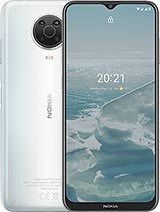Very useful information to analyze and compare before choosing a smartphone. Technical specifications tell us if the model we look at is suited for our needs. Comparing these specifications could bring us the best mobile phone for the less money possible.
Delving into the technical specifications is a critical step in selecting the ideal smartphone that aligns with both your needs and budget constraints. These specifications include, but are not limited to, processor speed, RAM, storage capacity, battery life, camera quality, and screen resolution. By comparing these attributes across different models, you can discern which smartphone offers the best performance and features relative to its price point. This analytical approach ensures that you’re not just paying for a brand name, but for a device that truly suits your lifestyle and usage patterns.
Moreover, it’s essential to consider the ecosystem that each smartphone operates within. For instance, iPhones are part of Apple’s ecosystem, seamlessly integrating with other Apple devices and services. Android phones, on the other hand, offer more customization and variety, with access to Google’s suite of services. Understanding these ecosystems can significantly impact your user experience, depending on which services and devices you use regularly.
Another crucial aspect to analyze is the smartphone’s software support and update policy. Manufacturers differ in how long they provide updates for their devices. Regular updates not only bring new features but also address security vulnerabilities, so a phone with a longer support window offers better value in the long term.
If you need a comparing tool for mobile phones take a look at this mobile phone comparations page. Otherwise you would have to use an excel table to sort out all the models offered by the market by every technical specification you might consider important.
Another important decision is the size of the mobile phone you consider fit for your hands and pockets. Here comes in handy the visual phone size comparison tool.
Technical Specifications for Nokia G20
 |
| Nokia G20 |
Cell phone specifications | |||
| Technology | GSM / HSPA / LTE | ||
| Announced | 2021, April 08 | ||
| SIM | Single SIM (Nano-SIM) or Dual SIM (Nano-SIM, dual stand-by) | ||
| Type | IPS LCD | ||
| Weight | 197 g (6.95 oz) | ||
| Size | 6.52 inches, 102.6 cm2 (~81.9% screen-to-body ratio) | ||
| Resolution | 720 x 1600 pixels, 20:9 ratio (~269 ppi density) | ||
| Dimensions | 164.9 x 76 x 9.2 mm (6.49 x 2.99 x 0.36 in) | ||
| OS | Android 11 | ||
| Chipset | MediaTek Helio G35 (12 nm) | ||
| CPU | Octa-core (4x2.3 GHz Cortex-A53 & 4x1.8 GHz Cortex-A53) | ||
| GPU | PowerVR GE8320 | ||
| Card slot | microSDXC (dedicated slot) | ||
| Internal | 64GB 4GB RAM, 128GB 4GB RAM | ||
| Features | LED flash, HDR, panorama | ||
| Video | 1080p@30fps | ||
| Single | 8 MP, (wide) | ||
| Video | 1080p@30fps | ||
| Sensors | Fingerprint (side-mounted), accelerometer, gyro, proximity | ||
| Type | Li-Po 5050 mAh, non-removable | ||
| Colors | Glacier, Night | ||
| SAR EU | 0.49 W/kg (head) 1.13 W/kg (body) | ||
| Loudspeaker | Yes | ||
| 3.5mm jack | Yes | ||
| GPS | Yes, with A-GPS, GLONASS, BDS | ||
| USB | USB Type-C 2.0, USB On-The-Go | ||
| Bluetooth | 5.0, A2DP, LE | ||
| NFC | Yes (market/region dependent) | ||
| Other | Network|2G bands-GSM 850 / 900 / 1800 / 1900 - SIM 1 & SIM 2 (dual-SIM model only) Network|3G bands-HSDPA 850 / 900 / 1900 / 2100 - International Network|-HSDPA 850 / 900 / 1700(AWS) / 1900 / 2100 - LATAM Network|4G bands-1, 3, 5, 7, 8, 20, 28, 38, 40, 41 - International Network|-1, 2, 3, 4, 5, 7, 8, 12, 17, 28, 66 - LATAM Network|Speed-HSPA 42.2/5.76 Mbps, LTE Cat4 150/50 Mbps Launch|Status-Available. Released 2021, May 17 Body|-Splash protection Comms|WLAN-Wi-Fi 802.11 b/g/n, hotspot Comms|Radio-FM radio Battery|Charging-Charging 10W Misc|Models-TA-1336, TA-1343, TA-1347, TA-1372, TA-1365 Misc|SAR-1.01 W/kg (head) 1.02 W/kg (body) | ||